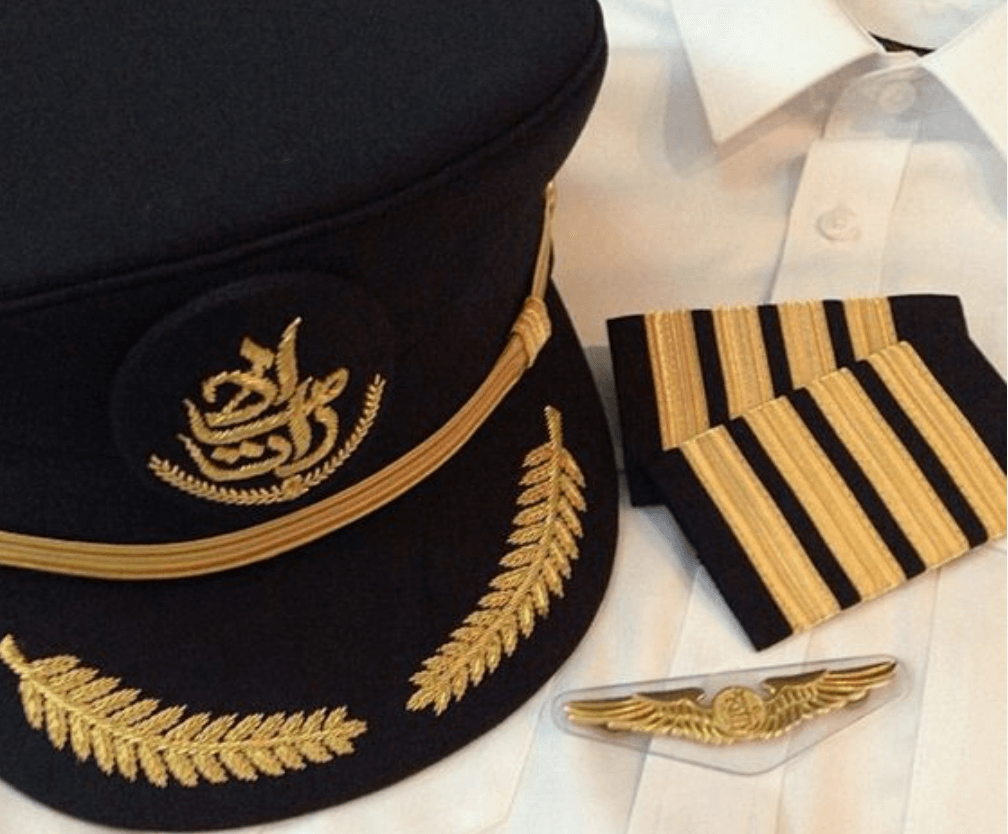
Welcome
Regardless if you already have got your wings or you are in the process of getting your wings welcome to the academy.
In general flying schools are great at teaching you to fly, but they rarely prepare you for the journey to get a pilot job. This one; getting a pilot job – is often up to the individual and the competition is usually very fierce.
Pilot survey in 2022
In a recent survey that we did which included 10 generations (so pilots graduating over a span of 10 years from Danish flying schools) provided us with some grim data. The full article (in Danish) can be found here.
473 pilots took part in the survey, and 62 % of them financed their own typerating. Not surprisingly only 22% of those graduating in 2021 had by March 2022 been working as a pilot. For those who graduated in 2020, 2019, and 2018 respectively 29%, 37% and 62% had achieved working as a pilot. Looking at those pilots who graduated in 2014- 2017, 88% had achieved to work as a pilot by March 2022. Let’s just pause there. This obviously means that of those pilots who graduated in 2014- 2017, 12% never got to work as a pilot at all. We think this is scary. There are many (sad) stories that are untold. People that do not make it as a pilot tend to leave aviation quietly- It’s the “I made it” pilots, that you see on Instagram or hear about at flying schools.
The 3 main reasons why students never made it were: “I have given up”, “I have taken another education”, “I work in another industry”. Some other reasons were: “Lost my medical”, “Wanted a family life”.
When you look at the average pay in our survey, it came to an average pay for the first pilot job of about 3000 EUR a month. Low starting pay can lead to financial difficulties, especially if getting the first pilot job involves financing your own typerating.
Pilot salaries can be hard to find, but this website may be helpful for research. Kukka did a lot of research and we will share the results with you in another future post.
This is not to scare you – but to prepare you.
The good news is that even during Covid-19 people got pilot jobs. In fact (and not to blow our own trumpet) the 2 support groups we managed during Covid-19 (where we met online once a month and practiced getting in a better position for a pilot job) all stopped for the same reason; People got into pilot jobs. Every single pilot. During Covid. How is this possible? Well, the main reason was that we practiced networking and how each pilot could “sell him/herself”. But let’s look a little deeper into it. During Covid, many airlines laid off pilots, and the unemployment numbers went sky-high. The truth is that no one really knew how many unemployed pilots there were in Europe, as there is no register that can provide the details. So it’s kind of speculation, but it’s likely that there were more than 10.000 unemployed experienced pilots. Imagine an employer (during covid) who needed a small number of pilots. What do you think would happen if they put out a job opening on their website? Well, yes most likely thousands of pilots would apply. How on earth would you select just a few out of such a big pool? It’s kind of a luxury problem for an airline but also a bit of a nightmare from an employment law point of view (avoiding discrimination and treating everyone the same). So what happened instead was the “do you know anyone” hiring process. This went on discretely on platforms like LinkedIn. It was through networking that you got a job during Covid.
What is the “new normal”?
On the other side of Covid-19, the situation is returning a bit more to “normal” or should we say “the new normal”. So what is the “new normal”? Many airlines (in Europe) are now looking at hiring and securing their pipeline of pilots for the future. While this is great news, it perhaps depends on timing more than everything. Airlines are well known for creating opportunities through agreements with individual flying schools. The kind of setup where you can join the airline provided that you have gone through a specific course. If you haven’t gone through the specific course and if you haven’t got experience (usually +500 hrs total) it is just bad luck, you cannot join this kind of setup.
Schemes, where you pay for a typerating and hours (pay2fly), are likely to re-appear. This can provide a bit more security than just getting a rating without having an employer set up on the other end. The downside with this kind of deal is that you are often tied into the operator for a few years and commuting back home might be tricky and expensive.
RYR continues to provide one of the fastest way into a good job. But it does come with a few challenges. Do not think it’s easy to get in just because you pay. Also, think about what you want to achieve long-term with your career. If you want to fly big jets, by all means going through RYR will enhance your chances of this. On the other hand, if you would like to try GA or regional flying, then perhaps you don’t need to go through RYR or similar schemes.
Becoming an instructor has been a popular choice over the years, and it probably still is, however finances and the slow rate of accumulating hours often prevent people from this route.
This is of course only high level, scratching the surface of your opportunities at the moment, but the kind of pilot job that many new pilots don’t consider is still the “networking jobs”. The networking jobs are usually jobs on smaller aircraft types for smaller-scale operators. One thing that is quite normal with this kind of job, is that the “pilot needed for the job” was due to start yesterday. In other words, you may have a very rushed recruitment for this type of job. Time and time again we try to teach students, we work with, to prepare mentally for this kind of opportunity, but still many fail to be ready. FOMO (fear of missing out) also challenges people, as making a decision on the spot can be difficult. What if something better comes around?
So to sum it up – the new normal is probably cadet-style jobs, self-financed typeratings (like RYR), and “Networking jobs”. So you could say, what has changed? Well, the competition perhaps. It has become harder because there could be a lot of pilots applying for the same jobs and staying sharp can be difficult.
What can I do – and where do I start?
The smartest thing to do is probably to stop and think. Think about what you would like to achieve with your career as a pilot. Getting a “career plan” could save you a lot of trouble later on and give you some kind of course to steer. Often newly graduated pilots “just want a job” and we get that. But depending on your long-term goals, there could be ways to start that are smarter than others. Finding someone to talk to about these aspects can be difficult. Experienced pilots tend to believe that “what they did” is still the best thing. However, the industry has often changed and opportunities are different than a few years ago. This is where we hope that we can be your competent partner. We love supporting individual pilots and providing individual-style feedback but this requires that we get to know you.
Through this post (which we know has already become long) we hope to open your eyes.
Here is an example of an individual-style syllabus we created for another pilot who wanted to do something while being between pilot jobs. These areas were things we thought the pilot could spend time on:
Flight preparation
Methods, tools, timescales
FTLs, commander’s discretion
Performance calculations takeoff and landing (normal, non-normal, dry, wet, cont)
METAR/ TAF, different reporting formats
SNOWTAMS, VOLMET
Stockholm radio
Reporting for duty
Report times
Crew room duties and procedures
Crew CRM and roles
Communication with CMD’er, SCCM/ CCM’s
Communication with handling agent/ Fueler/ Maintrol/ Go-center
Getting to the aircraft
The route through the airport
Ground personal interaction
Dispatcher interaction
Pre-flight time management
On-time departure concept
Slots
Fuel planning
Flight plan
Turn-around
Fuel-loading
Tankering
Fuel ice policy/ considerations
Refueling and defueling, fueling with pax on board, fuel monitoring
Use and adherence to ATL/ MEL/ DDG
Adherence to NPs/ areas of responsibility
Security procedures, sealing the aircraft
De-icing procedures
Dangerous goods
Take-off performance calculations
Engine start, non-normals (ground air, bleed air)
Loadsheets
Taxi
Taxi charts and signs
Taxi techniques, speeds, 180-degree turns
SETO considerations
Take-off
Take-off technique/ crosswind/ short field
SIDs, use of automatics, modes, NADP1, NADP2, climb thrust
Emergency turns
Noise abatement procedures
Use of EFB
Cruise
Use of ACARS, CPDLC/ HF/ SATCOM
Public announcements/ Normal/ Non-normal
Communication with SCCM
Emergency calls
Weather avoidance, use of wx radar
Turbulence prevention, actions flying in turbulence
QRH and OI’s and their use
RVSM procedures, normal, non-normal
TCAS maneuvers and RT
NAT HLA/ ETOPS/ WATRS
Route network, general knowledge of European airports/ destinations
Airport categories, qualifications
LIDO/ Jeppesen legends
Handling disruptive pax in flight
Bomb threat
System failures, in-flight failure management
Navigation procedures
Fuel monitoring, flight plan
Descent and approach
Approach briefings
Descent planning
STARs
Precision approach
Non-precision approach
LNAV- VNAV
IAN
Visual
Circling
Night landing
Autoland/ LVOs
Levels of automation including manual flight
Stabilized approach
Flap setting, intermediate/ landing flaps
Landing technique
Use of autobrakes/ speedbrakes/ reverse thrust
Calculation of Vref and wind correction
Cold weather and wind corrections
Holding
Post-flight
Brakes (cool down)
Use of APU
Completion of ATL
De-briefing, working with feedback
Planning and time management on turn-around at outstation
ASR/ FDM/ Safety Culture
Company reports
Factual writing
Secure, exiting the flight deck
General
Acting as a company representative
Threat and error management
CRM
Management style and qualities
Commercial awareness
Customer experience
Ferry flights with or without cabin crew
Command styles, flight deck gradient
Safety culture
SOPs
Simulator
Linetraining
Checking
Callouts
Monitoring
Cultural differences
Company culture
Fleet office, fleet managers
Pilot managers
Leave and days off
Standby/ reserve duties
Jetlag
Crewfood
Unspoken rules
Admin
Uniform
Expenses, claims
Insurance
Pension
Payslips
Command upgrades
Redundancies
Logbook
Crew incapacitation
Fatigue risk management
Overweight landings
Fuel dumping
Disciplinary
Seniority
Basing policy
Commuting
Distraction techniques
Disruptive passenger handling
Rules of the air
Communication procedures, including communication failure
Signals
ATC clearances, adherence to the flight plan, position reports
Interception procedures
Ground-to-air signals
Distress and urgency signals
Wake turbulence
Phew – that was a lot. As you can see there are a lot of things you can do. Having a syllabus like this can perhaps seem daunting and it will take a lot of time for you, but it gives you something to do. Something where your brain is thinking “flying” is really important. The good news is that you don’t have to pay a small fortune renting a plane or simulator, you can do this with advanced chair flying. At the academy, you have access to this kind of training with the mental training that we have developed with Freddy Gleisner. Combine it with the marketing (of yourself) that Kukka can teach you – and you are on your way to make a good and sound performance when you get the first chance to present yourself and the chance to get hired as a pilot.
Regardless of your journey, it’s all about learning and trying to become better today than you were yesterday.
Oh, and here is one more piece of advice before ending this post. Try to work with “process goals” rather than “dream goals”. A dream goal at the moment is perhaps getting a good pilot job. We get that. But it’s very hard for you to control such a goal as you don’t have any control over it. Developing yourself, making a sharper CV/ cover letter, and practicing interviews are all things you are in control over, and becoming betting within such areas are all “process goals”.
So let’s kick off this partnership towards you getting what you want out of your career. Let’s build the path based on knowledge, feedback, and honesty.
Happy landings
Kukka & Soren





